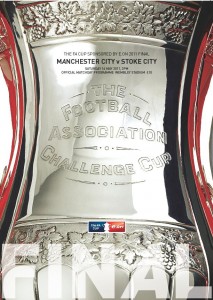Book Review: You Can Do It: How to Find Your Voice and Make a Difference by Marcus Rashford (Written with Carl Anka)
 Footballers are often referred to as role models and while a lot of footballers do try to serve this purpose, few really embrace and take full responsibility in the way that Marcus Rashford has. As well as his performances on the pitch, off it, in recent years he’s really stepped up, in particular with regard to his fight for free school meals. In addition, in 2021 he launched a book club aimed at children aged 8 to 12 as a means of developing literacy and a love of reading. As part of this project, last year saw him release his first book, You Are A Champion – an inspirational book to guide and educate young people to be the best they can be – and this year his first children’s novel, The Breakfast Club Adventures, was published. Not one to rest on his laurels, Rashford has followed up You Are A Champion with a second inspirational life guide for children and teens – You Can Do It.
Footballers are often referred to as role models and while a lot of footballers do try to serve this purpose, few really embrace and take full responsibility in the way that Marcus Rashford has. As well as his performances on the pitch, off it, in recent years he’s really stepped up, in particular with regard to his fight for free school meals. In addition, in 2021 he launched a book club aimed at children aged 8 to 12 as a means of developing literacy and a love of reading. As part of this project, last year saw him release his first book, You Are A Champion – an inspirational book to guide and educate young people to be the best they can be – and this year his first children’s novel, The Breakfast Club Adventures, was published. Not one to rest on his laurels, Rashford has followed up You Are A Champion with a second inspirational life guide for children and teens – You Can Do It.
Styled and designed in the same dynamic and engaging way as his first book, You Can Do It maintains, too, the positive, inspiring and motivational approach as it tackles really important themes, such as kindness, tolerance, acceptance, resilience and community. The book doesn’t shy away from difficult issues too, openly raising them and tackling them in ways that are relatable, wise and constructive. The sense of inclusivity is also really prominent and the way the book encourages positive dialogue around race, religion and gender is superb. So too are the book’s resounding messages, which really aim to bolster young people and foster positive characteristics. It is the type of book that has the power to really speak to young readers and to make a difference and having Marcus Rashford’s name behind it only serves as further inspiration.
Indeed, while a lot of footballers, and sports stars in general, opt to take the autobiography route when it comes to book deals, and there is often more than a hint of self-promotion to it all, it is refreshing and inspiring that Rashford, still a young man himself, has chosen to extend his genuine interest in, and fight for, young people by writing a book aimed specifically at them. There’s no ego or self-importance here; Rashford uses his voice and his power not to explore his own life but to help young people explore theirs. His role matters only in as much as he is reaching out and encouraging others. And how encouraging it is for young people to have an England and Manchester United star taking the time and interest in them, to feel a connection with and be understood by a footballing hero. It’s one thing parents, teachers and guardians trying to inspire young minds, but a bona fide superstar is quite another – I know who I’d be inclined to listen to as a football-mad youngster! And that Marcus Rashford has chosen to use his voice in this way is a real testament to him and his values. Wouldn’t it be great if other footballers, sports stars and celebrities took up the baton too?
Jade Craddock
(Publisher: Macmillan Children’s Books – Main Market edition. July 2022. Paperback: 224 pages)
Buy the book here:Marcus Rashford
 It was a pleasant surprise to find that Amberley had upgraded the paper quality of this book compared to their Fifty Defining Fixtures series and also that it contained a good number of quality colour illustrations. However, the layout at times seemed strange with some of the pages containing large areas of blank unused space and the book would have benefited from clearer direction for the reader on the locations of items that McCartney was referring to in his text, i.e. programme overleaf.
It was a pleasant surprise to find that Amberley had upgraded the paper quality of this book compared to their Fifty Defining Fixtures series and also that it contained a good number of quality colour illustrations. However, the layout at times seemed strange with some of the pages containing large areas of blank unused space and the book would have benefited from clearer direction for the reader on the locations of items that McCartney was referring to in his text, i.e. programme overleaf.
